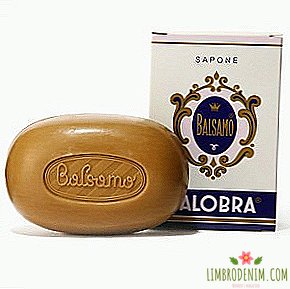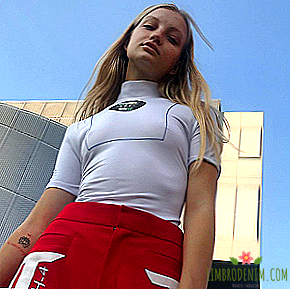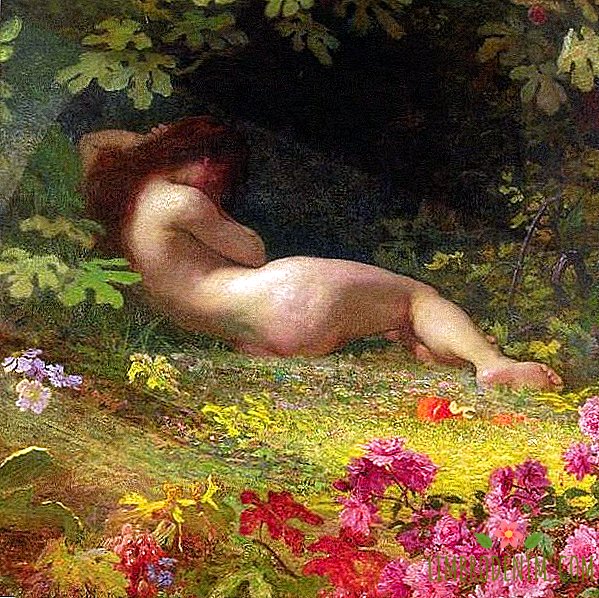How we drove 8500 miles across the USA in thirty days
It seems like long road trips are in my blood. With my parents, I managed to travel half of Russia on an old red Mercedes. I was always eagerly awaiting a regular trip - to relatives on the Sea of Azov or to friends in Voronezh. I love to travel: there is nothing more exciting than to leave the comfort zone and challenge yourself. In addition, there is no better way to know yourself than through travel. Now I understand that every trip I once went to, every culture I plunged into, and every person I met left a mark on my life.
I was lucky to meet a person who shares my interests. We got married and now plan our travels together. We live on the US East Coast, in Washington, DC. A year ago, we decided to drive around by car almost the entire West Coast of North America, including two Canadian provinces, in thirty days.

Nevada - Arizona - Utah - Colorado - Wyoming - Montana - Washington - Oregon - California - Nevada - this is how our route looked on the map. In the west, there is everything: from the snow-capped mountains and dense forests in Oregon to the desert plains and deep canyons in Nevada. Our four-week journey began from Las Vegas, although the first point of our route was not he, but a place in Arizona, four hours drive from Nevada - we did not waste time on the streets of the bustling city, but immediately set off.
On the way to Arizona, we managed to see several interesting places. For example, Lake Mead is America’s largest reservoir, located on the border of Nevada and Arizona. This is a popular tourist destination, but we have not met a single tourist there - only a few boats on the lake. I really liked it: large crowds of people and parking difficulties spoil the impression of a place.
Then we headed to another popular place among tourists - the Horseshoe. This is a picturesque meander of symmetric shape, where the Colorado River flows in a deep emerald green color. Since the goal of our road trip was to drive as many places as possible in the shortest possible time, we took several pictures, jumped into the car and rushed to the next destination.
The road to Arizona takes only four hours, but because of the stops, our trip stretched for a whole day. In the evening, we reached the top of the hill of Hualapai, from where our path had to begin to the waterfalls of Havasu. In addition to parking, the administration of the Indian reservation Havasupai and two dry closets, on the hill there is nothing. It is located about one hundred and fifty kilometers from the small town of Seligman. The road to the waterfalls begins from the top of the hill. From Hualapai to Havasu Falls is about nineteen kilometers, so you need to carefully prepare for the trek.
Many tourists prefer to spend the night in Seligman and in the morning by car to get to the top of Hualapai. We arrived late, so we decided to spend the night in the car and start our way at four in the morning. In arid Arizona, the temperature rises to forty degrees Celsius by nine in the morning. Havasu Falls on the territory of the Havasupai Indian Reservation is a paradise on earth hidden between the steep cliffs of the Grand Canyon. In translation, the name of the tribe means "people of turquoise water": the sky-blue color of the waterfalls is explained by the large amount of calcium and magnesium carbonate dissolved in it.
To the waterfalls leads sixteen-kilometer, mostly flat, trail, which runs along the bottom of the canyon. In addition to stones, high rocks and the scorching sun of Arizona, there is nothing more on it. The most difficult part is the beginning of the path, where you need to go down the steep path to the bottom for about a mile and a half. This may seem like a trifle on the way to the waterfalls, but you will need to go back up the hill after walking through the 40 ° C heat. There are some tips that can ease the way. First, take as much water as you can. Secondly, you will need high-quality hiking boots with a hard sole and plastic sandals. If you carry a backpack yourself (and do not use, for example, mules), think twice when you pack it: the easier it is, the better, but keep in mind that you should be prepared for everything that nature can throw out.
After sixteen kilometers you will reach the village of the Havasupai tribe: here you need to register and get special bracelets. In the village there is a shop, cafe and even Wi-Fi. But it’s too early to relax: there is another three kilometers from the village to the tent camp. In sultry Arizona, Havasu Falls resemble a true oasis: crystal clear emerald water is surrounded by green trees and fiery red rocks of a canyon.
We spent four days at the waterfalls, spent the night in a tent, ate hiking food, drank water from a local spring, and washed in the waterfalls. Nineteen kilometers of the way back, I probably will never forget - especially the last four kilometers up the hill. We drank all the water that we had (more than four liters), I swore at the Arizona heat, and my husband just dreamed of getting into an air-conditioned car as soon as possible.
After the waterfalls, we, exhausted by the sun, went to watch the Grand Canyon. I still do not understand where I then had the strength to get behind the wheel, but, apparently, I so much wanted to quickly return to civilization and take a shower that I was ready for everything. In addition, to visit the US West Coast and not look at the Grand Canyon is unforgivable. The road took about three hours with a stop for a snack. When we reached the park, we went straight to the shower - I almost lost my mind from pleasure.
The national park has an excellent organization: there are parking lots, campgrounds, a paid shower, toilets, a cafe and a museum. On the edge of the canyon there are many specially constructed observation platforms. We are not big fans of fences and organized tours (we prefer everything wild and deserted), so we didn’t linger for a long time in the park and moved on.
Then we headed to Zion National Park in Utah; the road from the Grand Canyon to it took about four hours. Starting from this site, we stayed in low-cost roadside hotels. The main goal in Zion was to get to the Angel Shelter lookout point. A year before our trip, I was watching videos from this park shot on GoPro and I remember how my heartbeat quickened, and my palms were sweating. This is an incredible experience: a four-kilometer-long road climbs uphill to a height of 454 meters - the serpentine later turns into a narrow path that spreads along the very edge of the mountain. I do not recommend this place to those who are uncomfortable at an altitude of 400 meters. If this does not bother you, grab a pair of cheap athletic gloves with you: when lifting, it is important to grab the ledges or the chain that you have taken along the most dangerous sections of the path, and it is much more convenient to do this with them.
In the peak season, in the summer, there is an incredible number of tourists. During our ascent, traffic jams repeatedly occurred because of those who were slower than the others, but even crowds of people could not spoil our impressions. Zion is a park of incredible beauty, and I regret that we did not allocate more time to it - we will definitely return there.
Then we went to explore the Black Canyon Gunnison - a national park in Colorado, the road to which took us about six hours. I travel a lot, and yet nothing impressed me like this canyon. I did not know anything about him beforehand - thanks to my husband for finding this place and did not say where we were going. We drove through the snow-capped mountains and green meadows, and it was impossible to predict what was to come.
Black Canyon Gunnison is located in the western part of Colorado. For all the time we spent next to him, we saw only three cars and four tourists. The canyon is quiet and deserted - you can hear only birds singing and the sound of the river at the bottom. The canyon is called Black because of its depth: some parts of the gorge receive only half an hour of sun per day. The canyon is steep and narrow, its average depth is 610 meters. There is not a single bridge through it, so the park can be accessed either from the south or from the north. We did not have time to explore both parts of the park, so we drove only along the north. You can reach it by a dirt road, which, by the way, is completely closed in winter. It is much calmer here than in the Grand Canyon: you can fully concentrate on the nature around you, without being distracted by crowds of people, loud conversations and parking difficulties.
Further, through deserted Wyoming and Yellowstone National Park, we headed to Glacier National Park. It starts in Montana and stretches all the way to Canada. We had only a few hours to see this huge park, but I still managed to fall in love with its incredible landscapes. Rocky mountains, lakes and white snow are interspersed with waterfalls, thick green spruces and fields dotted with yellow flowers. Walking through the park, you can meet mountain goats and grizzly bears. By the way, Glacier leads the number of deadly bears attacks on people among all the national parks of North America, so the administration strongly encourages visitors to purchase pepper cylinders.
The road under the romantic name Going-to-the-Sun, which stretches between the giant rocky mountains of the park at an altitude of 2026 meters, is incredibly picturesque. It leads to the highest point of the park, from which several famous hiking trails begin. One of them is the Hidden Lake trail. This is a simple path that leads to a lake located between the mountains; the route to both sides takes a little less than nine kilometers. Even in summer, at a temperature of 25 degrees Celsius, there is snow in the Glacier Mountains - so you need to take warm shoes with you (although I saw people who climbed a mountain in slippers). From the first scenic point of the route, after about two and a half kilometers, there is a view of the lake and mountains covered with snow - you can lose your head from the silence around.
Another trail for which I would like to return to this park is the Highline trail, which stretches twenty-four kilometers. Part of the way you need to go along the edge of the mountain at an impressive height, so it will not suit those who are afraid of heights. We walked only a couple of miles through it, but that was enough to enjoy the views.
Passing Washington and Oregon, we found ourselves on the famous Route 1 highway. Every five minutes we had to stop: everything we saw along the road resembled some unreal scenery. Passing the friendly and misty San Francisco, we stopped at Yosemite National Park, famous for its granite rocks, lakes, waterfalls and rich nature.
Our goal was the Half Dome rock, one of the most difficult to climb. To get permission to climb, you need to take part in the lottery on the official website of the park long before the trip, and only after it you can make plans. A trip back and forth usually takes ten to fourteen hours, depending on where you start your journey from and where you plan to go down. We won a lift permit, but we had a catastrophic lack of time, so we had to give it up - offensively, but there is a reason to return. Nevertheless, we still have time to see the Vernal and Nevada waterfalls - another place, next to which you feel very small.
In Los Angeles, I made a second tattoo, we walked along the "avenue of stars", stopped at Venice Beach and rode around the Hollywood hills for a bit. California was the last point of our journey: from there we headed back to Las Vegas and then home.
My husband and I went through a lot of trials during the trip. It was physically difficult: it was necessary to get up early every day, drive a car for several hours and walk a lot. At times it was difficult emotionally (just imagine: 24 hours a day, seven days a week together, in one car), but still it was the best thirty days in my life. I returned to Washington by another person. I moved to the USA four years ago and had no idea how beautiful and rich the scenery was in the country. We have already begun to plan a second large-scale trip along the West Coast - we want to capture even more unusual places hidden from the eyes of tourists.
Photo: monstersparrow - stock.adobe.com




